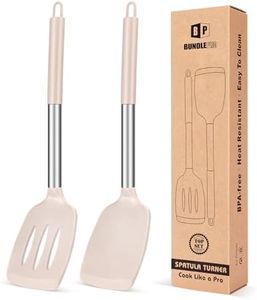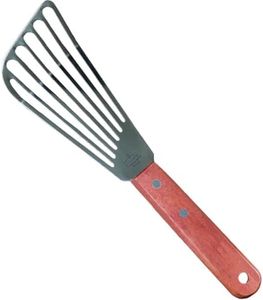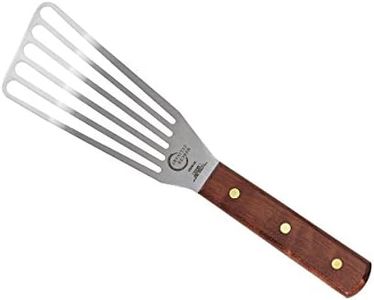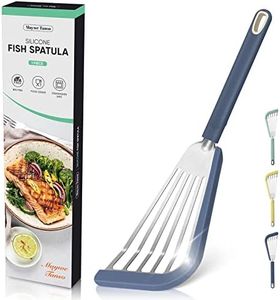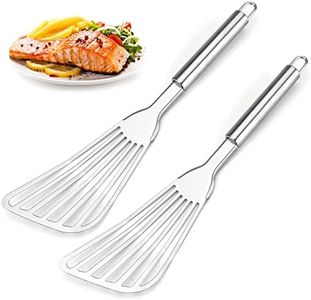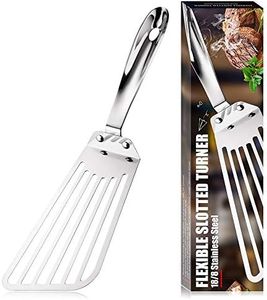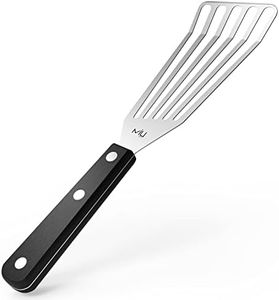We Use CookiesWe use cookies to enhance the security, performance,
functionality and for analytical and promotional activities. By continuing to browse this site you
are agreeing to our privacy policy
10 Best Fish Spatulas
From leading brands and best sellers available on the web.Buying Guide for the Best Fish Spatulas
Choosing the right fish spatula can make cooking delicate foods like fish fillets much easier and more enjoyable. While all spatulas might seem similar at first glance, fish spatulas are specially designed to handle fragile foods without breaking them apart. When picking one, understanding a few key features will help you find the best fit for your cooking style and typical recipes.Blade FlexibilityBlade flexibility refers to how much the spatula's head bends or moves when you apply pressure. A flexible blade is important because it allows you to gently slide under delicate foods, like fish, without tearing or damaging them. Spatulas range from very flexible to stiff. Highly flexible blades are great for handling thin or fragile fillets, while stiffer ones are better if you plan to use the spatula for heavier or less delicate foods. Think about what you’ll mostly be cooking; lighter dishes benefit from more flexibility, while a general-purpose spatula can be a bit firmer.
Blade Shape and SizeThe shape and size of a fish spatula’s blade determine how well it maneuvers under food and fits inside pans. Fish spatulas commonly have a long, slightly curved, and tapered blade, which is ideal for reaching under fillets and getting into the corners of pans. A wider blade helps with larger pieces of fish, and a narrower one is good for smaller pieces or tighter spaces. Pick a size that matches the pan sizes you typically use and the foods you like to cook most often.
Slotted DesignMost fish spatulas feature slots in the blade, which serve to drain oil or juices as you lift the food. These slots are important for keeping food crispy and helping you serve it cleanly. Spatulas with more and wider slots will drain faster, which is good for fried foods or delicate frying. If you plan to use the spatula for more general cooking, you may want one with narrower or fewer slots to provide more support.
Handle Comfort and LengthThe comfort and length of the handle affect how easy it is to use the spatula safely and comfortably. A comfortable, non-slip handle helps you maintain a steady grip even with wet or greasy hands. A longer handle can keep your hand away from heat, which is useful when working on larger pans or grills, while a shorter handle offers more control in tight spaces. Consider your cooking setup and choose a handle that feels secure and fits your needs.
MaterialFish spatulas are made from different materials, commonly stainless steel, silicone, or a combination. Stainless steel is sturdy and good for scraping and lifting but should only be used with metal-safe cookware to avoid scratching. Silicone spatulas are gentle and safe for nonstick pans. If you use various types of cookware, you might want a spatula with a steel blade and a silicone coating. Think about your pots and pans: stainless steel for metal, silicone for nonstick.

